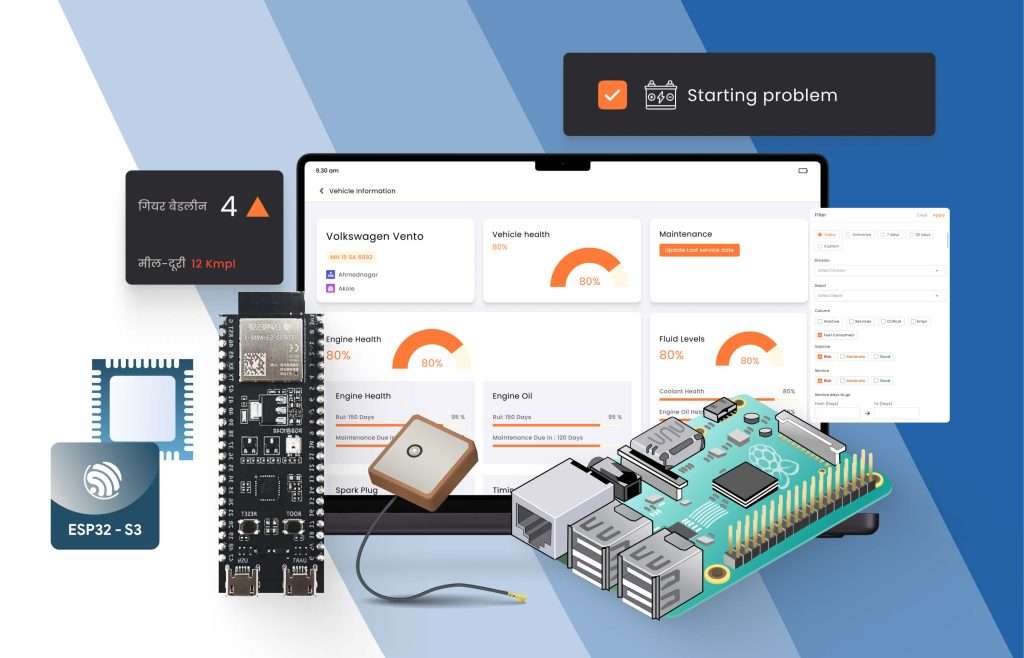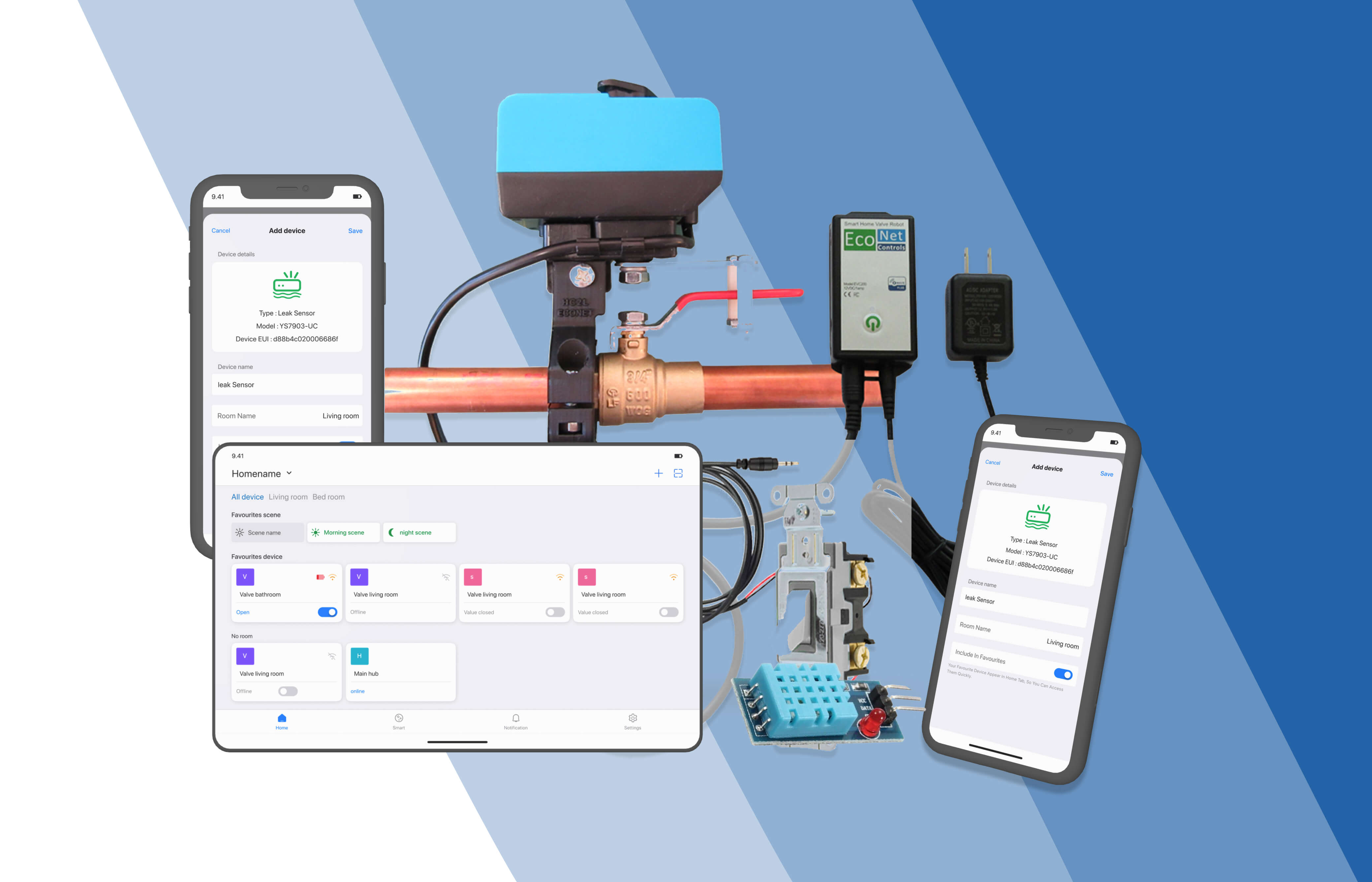Hotspot Detection
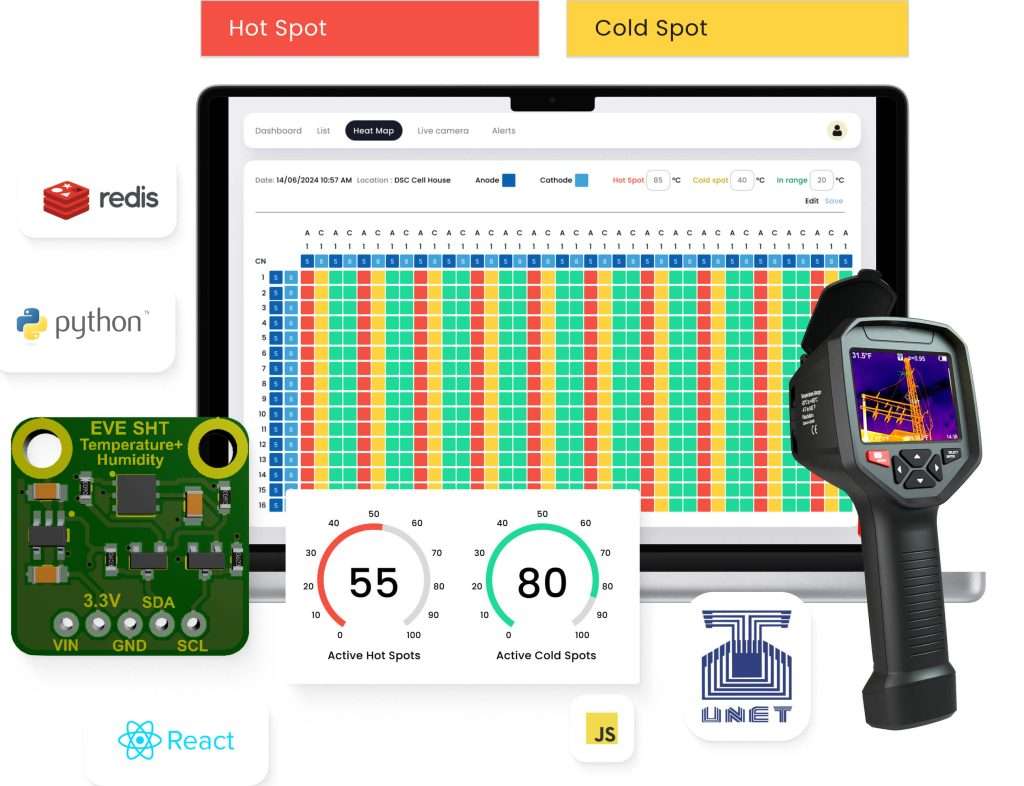
A Thermal Camera mounted on moving cranes identifies Hotspots & Coldspots in a cell house using Unet for image detection, Python for Backend, Flask for Server, Postgres & Redis for Storage Database and ReactJS for Web App, which features the analytics of the cell house’s overview and resolution of hotspot/ coldspot for improved efficiency.
Looking for a Smart Device to develop?
Share at:

About Hotspot Detection
The Hotspot Detection ML Solution is specifically designed for a major Zinc production unit in India to optimize cell house monitoring. The thermal camera, connected on top of a crane, scans the cell house, detecting anomalies, which are processed using custom ML U-Net image detection models.
This data is displayed in real-time on the web app, allowing users to view hotspots/ coldspots on live camera feeds or in a 2D array representation where each cell is categorized based on its thermal status, powered by an industrial IoT platform. This solution highlights the expertise of leading industrial internet of things companies in delivering cutting-edge monitoring and automation.
The application further offers detailed analytics and reporting, making it easier for operators to track and analyze the temperature history from each shift and specific cell. By integrating Python, Flask, and PostgreSQL for back-end processing and secure data management, the system ensures real-time, reliable performance. Redis is employed for caching to enhance speed, while React powers the responsive UI.
This solution exemplifies the power of IoT and industrial automation in enhancing operational efficiency and safety.
Features & Purpose Of
This Application

Utilizes U-Net for precise image detection, enabling accurate identification of thermal anomalies within the cellhouse.

Utilizes U-Net for precise image detection, enabling accurate identification of thermal anomalies within the cellhouse.
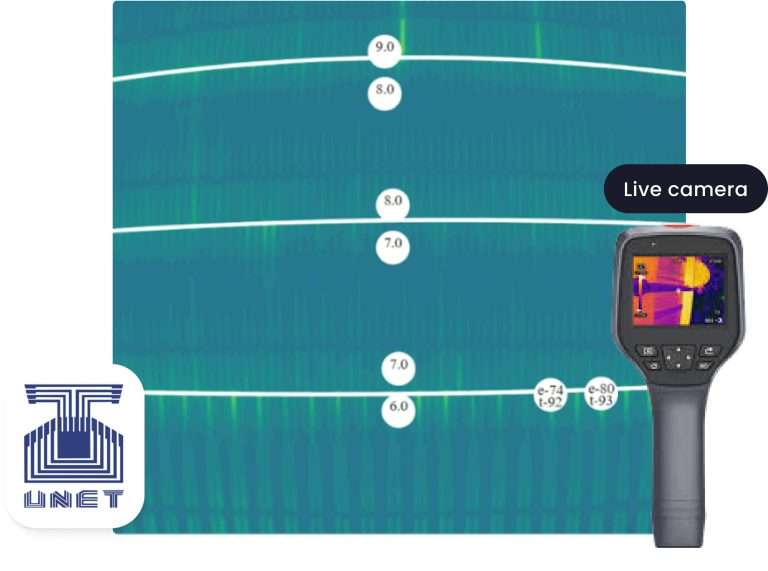
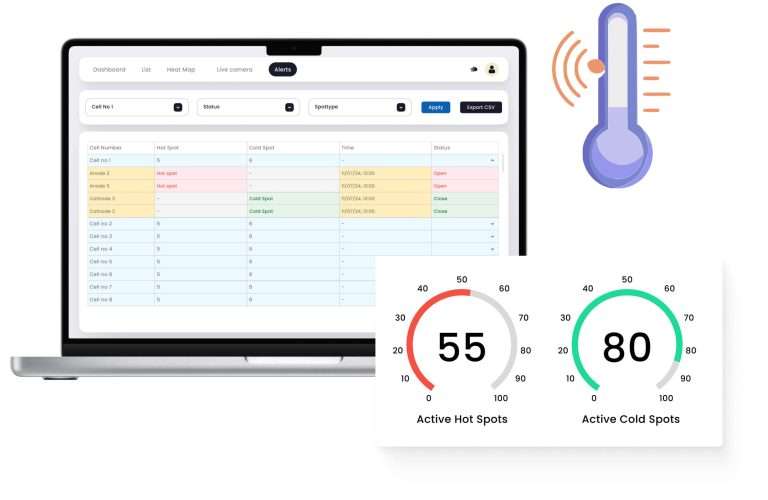

The device transmits live individual thermal data of cathode/ anode of each of the cells wirelessly to the web app, ensuring instantaneous feedback on temperature variations.

The device transmits live individual thermal data of cathode/ anode of each of the cells wirelessly to the web app, ensuring instantaneous feedback on temperature variations.

The web application allows users to view, analyze, track hotspot data trends and implement corrective actions efficiently.

The web application allows users to view, analyze, track hotspot data trends and implement corrective actions efficiently.
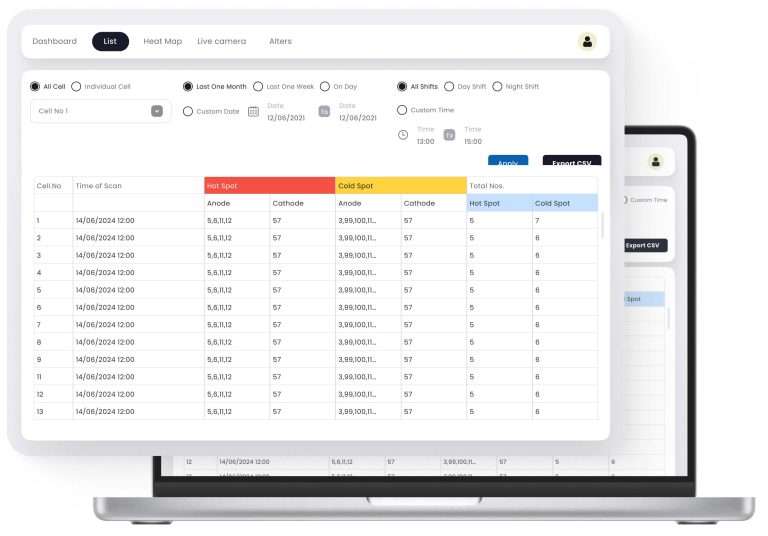
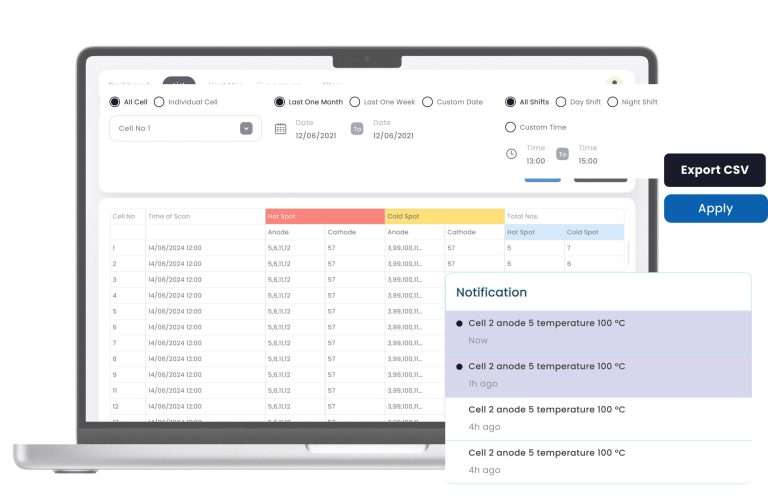

Various reports are generated: Historical occurrences, Top 10 Hotspots, Repeated hotspots in the 2 shifts,… which can be filtered based on Temperature, cells, shifts, etc.

Various reports are generated: Historical occurrences, Top 10 Hotspots, Repeated hotspots in the 2 shifts,… which can be filtered based on Temperature, cells, shifts, etc.

The system is built using a combination of technologies such as Python, React, and Flask, providing seamless communication between the detection device and the front-end application.

The system is built using a combination of technologies such as Python, React, and Flask, providing seamless communication between the detection device and the front-end application.
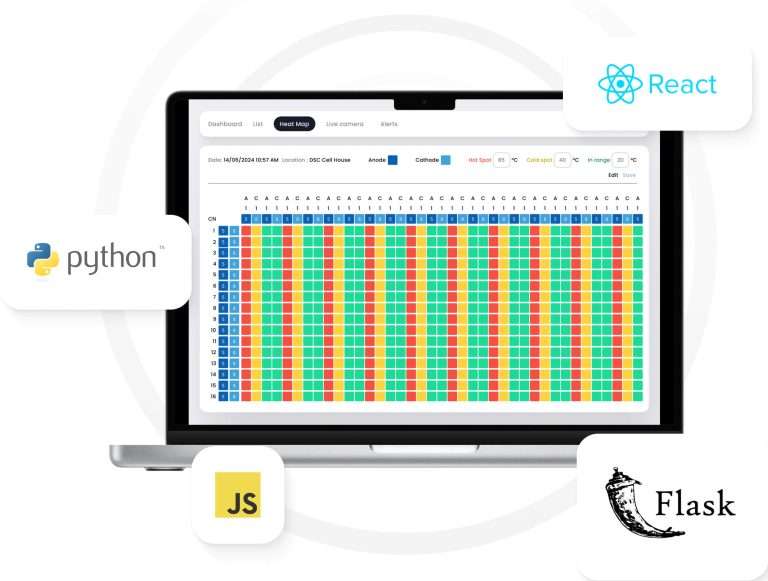
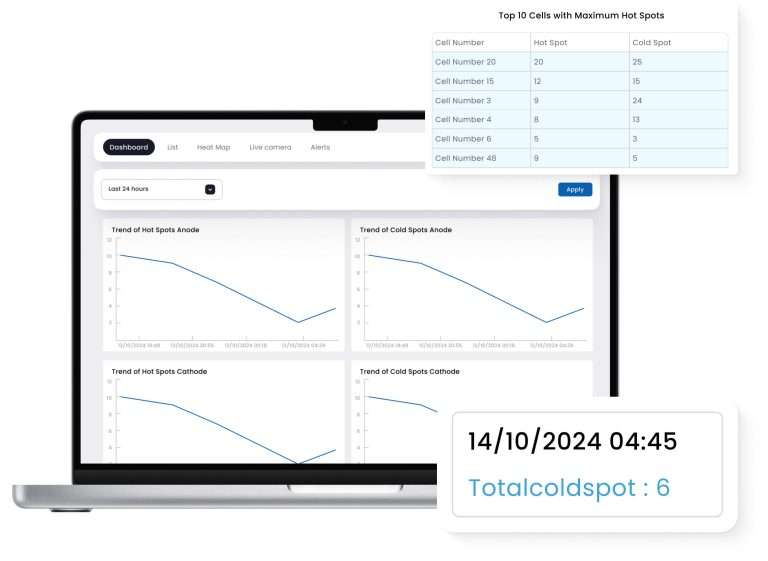

Users can set and adjust thresholds to identify hotspots and coldspots based on specific operational requirements, allowing for customized monitoring.

Users can set and adjust thresholds to identify hotspots and coldspots based on specific operational requirements, allowing for customized monitoring.

